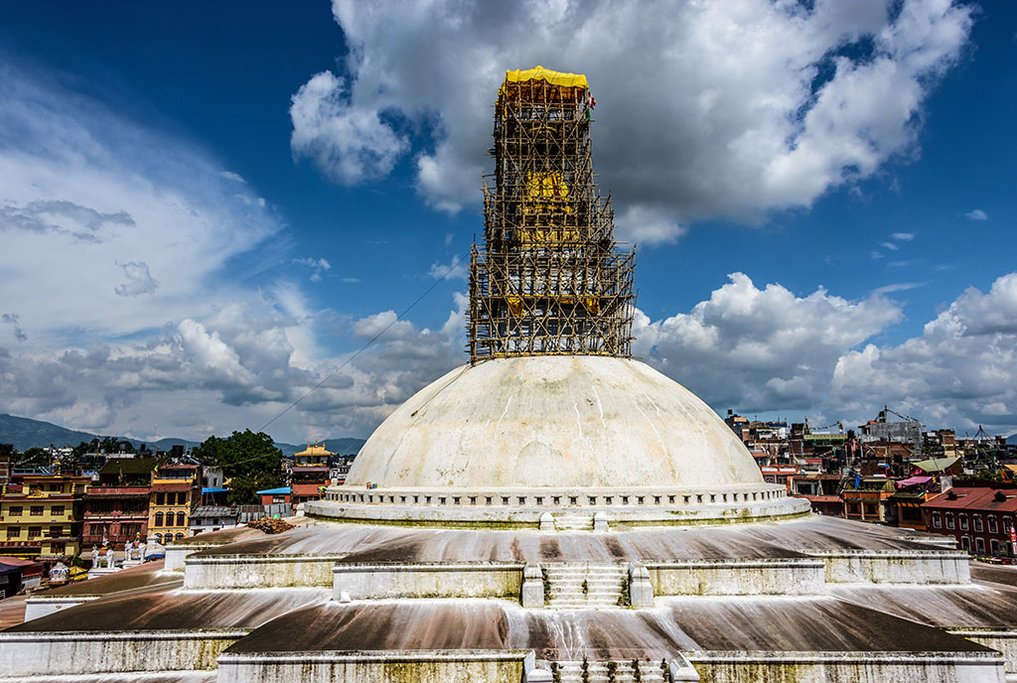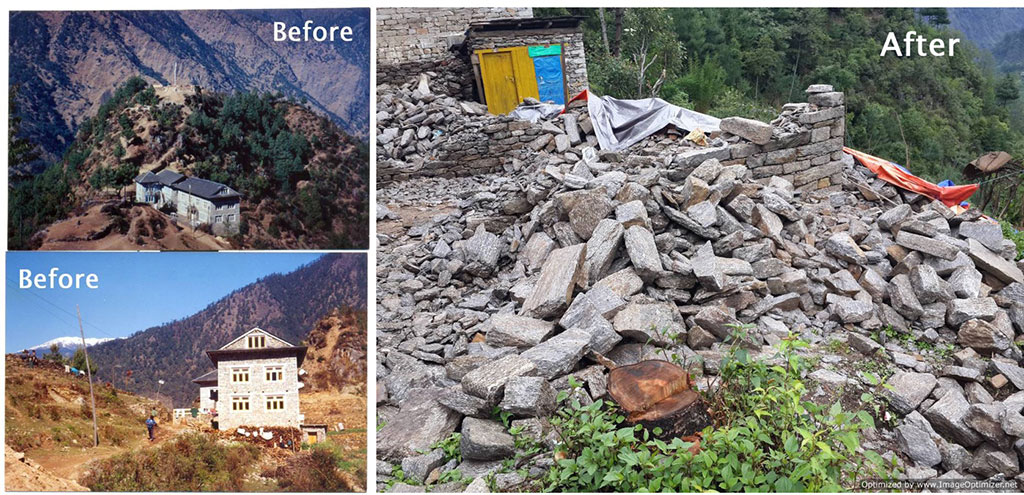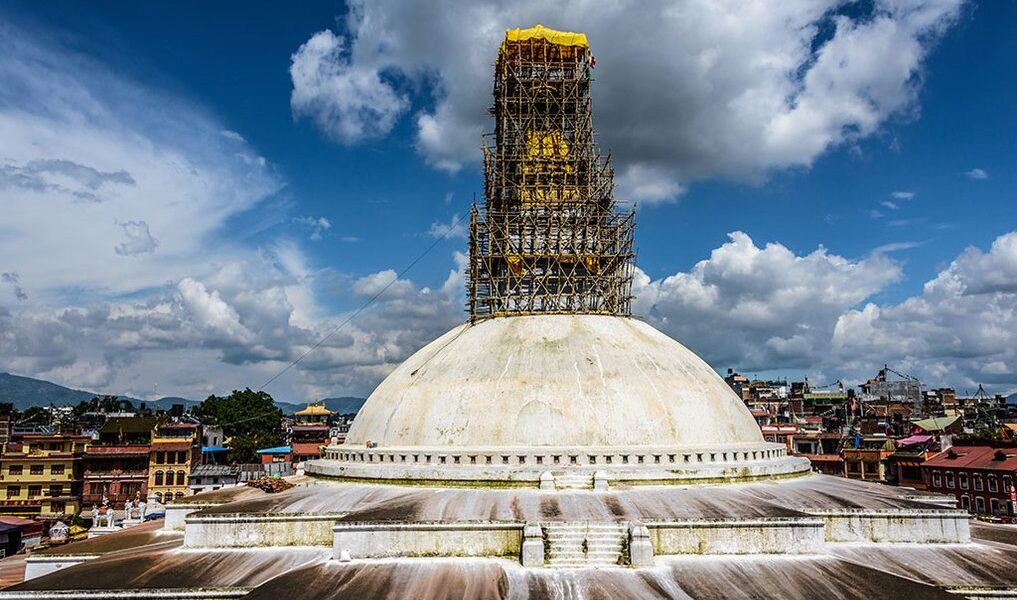
In May 2015, Nepal was struck by a 7.8 magnitude earthquake. Many travelers are still wondering if it’s safe to visit Nepal. The short answer is “yes”. The earthquake has caused severe damage in certain regions, but the country is rebuilding and open for travel.
Ngima Dorji Sherpa, a knowledgeable local expert and one of our trusted Insiders in Nepal, offers a detailed perspective on the aftermath of the devastating earthquake and the subsequent recovery efforts that have been undertaken in the beautiful, resilient nation.
**The Months Following the Earthquake: A Period of Intense Recovery**
Following the earthquake, Nepal faced immense challenges across all sectors, including a significant impact on the tourism industry. The earthquake left a trail of destruction, leaving many individuals in affected areas grappling with the loss of their homes, which either collapsed entirely or sustained severe structural damage. Many structures needed to be either completely demolished or extensively repaired. Unfortunately, the response from the government was perceived as slow and inadequate, leaving many victims in dire need of shelter. These individuals were forced to reside under temporary tarpaulins, exposed to the harsh and unforgiving weather conditions.
Recognizing the urgency of the situation, Nepal Myths & Mountain Trails, an organization dedicated to supporting the people of Nepal, initiated a fundraising campaign, seeking donations from various sources around the world. With the assistance of numerous friends and generous donors, they were able to gather much-needed funds to provide aid to those most affected by the disaster.
All reconstruction efforts were channeled towards rebuilding homes in villages affected by the earthquake. The focus was on providing safe and secure housing for the displaced communities, ensuring their well-being and restoring a sense of normalcy to their lives.
The organization distributed essential supplies, including food and sanitary materials, to rural villages surrounding Kathmandu, specifically targeting Bhimdhunga, Pharping, and Chapagaun. Additionally, they organized a mission to deliver rice supplies to the Dolkha District. However, their efforts were disrupted by the second major earthquake on May 12th, which struck while the team was en route to Dolkha. Thankfully, the team and their supplies escaped without major damage, and they were able to successfully hand over the supplies to a designated representative in Dolkha, ensuring that the much-needed aid reached its intended recipients.
Subsequently, Nepal Myths & Mountain Trails arranged for the distribution of 226 bundles of corrugated zinc sheets to 113 households located in Bhittari village of Namadi VDC, Ramechhap District. This initiative was particularly crucial as the monsoon season was fast approaching, and the people desperately needed roofing materials to protect themselves from the torrential rains. The recipients of these zinc sheets expressed immense gratitude, as they had little hope of receiving timely assistance from the government. The provision of these roofing materials offered them a sense of security and protection, enabling them to rebuild their homes and lives.
Following this successful distribution, the organization extended its efforts to the villagers in Juving VDC of Solukhumbu District, where they began distributing zinc roofs to the victims of the earthquake. To date, they have provided zinc sheet roofing to 143 households, allocating four bundles to each family. The impact of this initiative is already visible, with some houses constructed using the provided zinc sheets already completed, while others are still in progress. Demonstrating their unwavering commitment, the organization plans to distribute four bundles each to an additional 25 houses in Juving, and Ngima Dorji Sherpa is personally heading to the village in the coming week to oversee this final distribution.
**The Current State of Tourism and Safety in Nepal**
Many travelers naturally wonder if it is safe to visit Nepal after such a devastating event. The good news is that Nepal is now considered perfectly safe for tourists. The aftershocks have subsided, and the majority of hotels have been repaired and are fully operational. The trekking routes are also clear of any significant problems, and almost all the lodges have reopened, with the exception of those in the villages of Langtang and Kyagin Gompa. These two villages suffered significant damage from the earthquake and subsequent landslides, and they remain temporarily closed for trekking. However, it is still possible for trekkers to visit these locations and witness the ongoing recovery efforts.
**The Condition of Heritage Sites in Kathmandu**
The earthquake did inflict damage on several cultural heritage sites located in the Kathmandu valley. These sites, including Boudhanath, Swayambunath, and Durbar Square, hold immense historical and cultural significance. While the reconstruction process is actively underway, these sites remain open to visitors. Tourists can witness firsthand the impact of the earthquake and observe the progress of the ongoing restoration efforts. Engaging a knowledgeable local guide can enhance the experience, providing invaluable insights into the rich history and enduring values of each site, ensuring that their significance is never forgotten.
**How You Can Help Rebuild Nepal**
Despite the progress made, Nepal continues to require assistance in its recovery efforts. The country has faced further challenges due to ongoing social unrest and economic blockades, which have exacerbated existing problems. The emergence of black markets and rising prices due to fuel shortages have further hampered business activities and led to increased unemployment.
One of the most impactful ways to help rebuild Nepal is by supporting its tourism sector. By visiting Nepal, embarking on treks, and spending money within the country, tourists can directly contribute to the livelihoods of numerous individuals involved in the tourism industry, both directly and indirectly. Furthermore, the government will generate tax revenue from tourism, which can then be utilized to fund the nation’s reconstruction projects.
For those who wish to volunteer their time and skills to help rebuild Nepal, Nepal Myths & Mountain Trails has developed several programs and trips to rural villages. Individuals can participate in trekking trips or join free Medical Health camps, providing essential medical assistance to those in need. Moreover, if volunteers can raise funds back home, the organization can ensure that these funds are used to purchase necessary goods for the victims, and volunteers can actively participate in distributing these goods in the villages. The organization is dedicated to developing similar programs that can both provide assistance to victims and satisfy the desire of individuals to contribute to the rebuilding efforts.

B-1823

